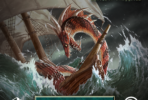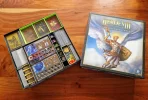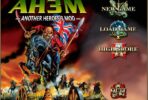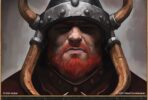Heroes 3.5: In the Wake of Gods Portal > Heroes 3 Recollection: The Day I Foresaw 3DO’s Doom
Heroes 3 Recollection: The Day I Foresaw 3DO’s Doom
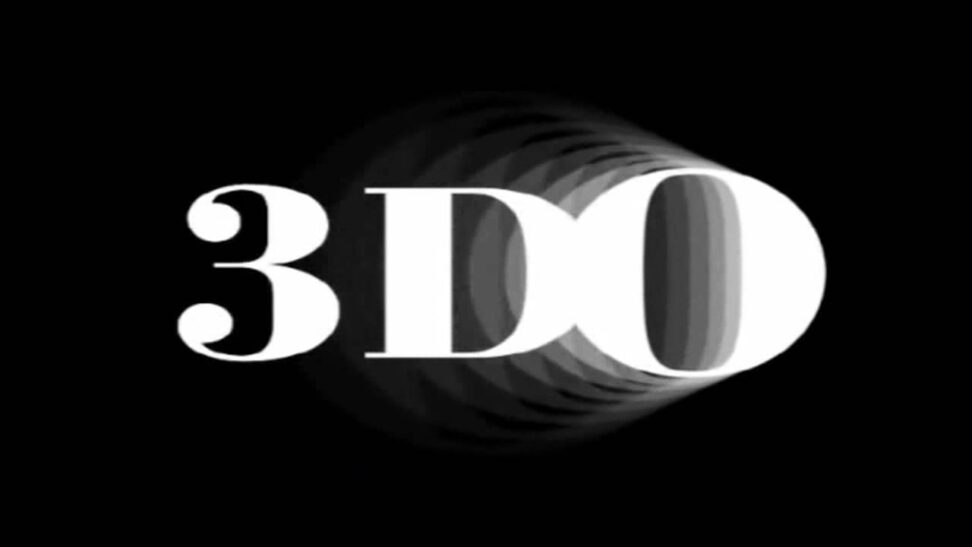
If you are reading Fanstratics newsletter carefully, you already know about this information, and if not, you should definitely subscribe to the news here.
Once a year (during the summer if I recall correctly), Trip Hawkins and a small entourage of 3DO management, would fly down from Redwood City, to Agoura Hills and the offices of New World Computing (NWC). After lunch, the entire company would stop work, and travel to the nearby Radisson hotel (now a Sheraton hotel). Most would walk, happy to leave the office, get some mild exercise, and feel the heat of the Sun. Trip would take a car.
At NWC, almost everyone in the company was familiar with the Radisson. When Jon Van Caneghem (JVC) would put in his two or three days at work, his nights were spent at the Radisson, as his real home was more than 90 miles away. At the Radisson, 3DO rented out a small ‘convention’ room. Therein resided a projector, seats, and refreshments, all setup for Trip to give a presentation on the current state of 3DO. I think it would be safe to say, when given the choice between continuing work, or listening to Trip’s presentation, most would have continued working. Unfortunately… attendance was mandatory.
After everyone had arrived, we took our seats, and Trip began his presentation. I don’t remember much about it, except for two very specific subjects.
Subject number one was our ‘quarterly to do lists’. At some point, Trip sent a broadcast email, to every employee under the 3DO umbrella, requiring us to send to him a list of our induvial top ten goals, for the next three months. It was pointless paperwork no one wanted to do. Basically… a 3DO TPS Report.
Game development is an art, not a science. While it’s nice to have a list of goals, even under the most structured circumstances, with the most complete design documentation… game development tends to be fluid. I always preferred the quote from George Patton, “A good plan, violently executed now, is better than a perfect plan next week.” By all means, make a good plan and set a general direction, but a perfectly crafted plan tends to collapse in the face of unanticipated obstacles. It’s better to be hyper organized, relatively nimble, and able to adjust as circumstances dictate. A list of ten quarterly priorities… is at best… a wish list.
Regardless, as part of his presentation, Trip went over various top ten lists from various NWC employees. Phelan Sykes, our Art Lead, got singled out because she made her list using 3ds Max. When asked ‘why’, she replied, “It was easier than trying to get rid of that annoying paper clip thing in Word.” I got singled out for being the most concise. Like everyone else, I had ten entries, but in total, the list was probably less than 50 words. It took me less than 15 minutes to write.
Subject number two was Trip’s ‘big picture’ speech, which was the real meat of his presentation. In 1996, 3DO began its pivot from being a hardware company, to being a software company, by selling its M2 technology to Matsushita for $100 million, buying New World Computing, Cyclone Studios, and Archetype Interactive. This pivot was completed in 1997, when it sold off the last of its hardware business to Samsung for $20 million. As Trip revealed to the NWC employees in attendance, at this point, in 1998, 3DO had more than $30 million dollars in the bank (roughly $50 million today (adjusted for inflation)). To me, this sounded great. $30 million dollars could lay the foundation for building some truly great games. Immediately after Trip revealed the size of 3DO’s savings, he announced… over the next 12 months… they were going to spend it all.
A wave of murmurs swept across the room. Clearly most of the NWC employees, if not all, thought this was an unbelievably bad idea. Trip couldn’t ignore the audience reaction and quickly explained, “I understand what you are thinking, but at some point, we need to grow the company.”
This was where Trip lost me. This is what I didn’t understand. Why was spending $30 million necessary to ‘grow the company’? In my mind, my instincts told me, “Cut the company to the bone, down to two or three top tier development teams. Use the $30 million to buy time. Use the $30 million to build great games with good, sustainable, franchise potential.” This however was not the case, and there were a number of complications.
First, 3DO was still a public company. At its height, 3DO’s stock was at $37, and in the summer of 1998, it hovered around $6. Priority one was increasing the value of the company’s share price.
Second, 3DO had a distribution channel to feed. To increase the value of the company’s share price, 3DO needed to increase its revenue. To increase its revenue, they needed to sell product. To sell product, they needed… product… and they needed it immediately. Remember Heroes2 Gold? For two weeks, John Bolton and I were pulled off Heroes3 to work on Heroes2 Gold. Why did NWC create Heroes2 Gold? 3DO wanted a ‘new’ Heroes product on the shelves for Christmas 1998. Our quick and easy solution, to placate 3DO, was to repackage Heroes2 with 25 ‘new’ community made maps.
Third, Trip was not a gamer. Truthfully, Trip was never a video games guy. Sports video games? Yes. Non-sports video games? Not really. Trip started as the Director of Strategy and Marketing at Apple, and he honestly had a genuine talent for promotion, but ultimately, he had more in common with Bobby Kotick than Gabe Newell.
Fourth, and in my personal belief, Trip was still rooted in his past. When Trip started Electronic Arts (EA), in 1982, competition in the computer games space was very different. In the early 1980’s, the ‘arcade’ mentality still permeated the market, and video games were first and foremost… a product. In the 1980’s, the mantra used to be, “Make something I can sell.” In the late 1990’s, the market had changed, and games were much deeper and more complex. In the 1990’s, the mantra was had become, “Make something creative I can sell.”
Trip wasn’t interested in making great games. He was interested in making product for the company distribution pipeline. To a degree… I understand.
Trip had a duty to the shareholders, and to this end, he did what he understood to be best. This meant embracing what worked for him during his time at Electronic Arts. Specifically, the ‘Madden’ model of game development, which meant each ‘franchise’ needed to release a new product every year. While this might make sense for sports games, it can be the kiss of death for creative product. How many franchises have been destroyed by forced development leading to bad games and franchise fatigue? Ever wonder why NWC made so many games?
Heroes of Might and Magic (HoMM)
1999
Heroes of Might and Magic III: The Restoration of Erathia
Heroes of Might and Magic III: Armageddon’s Blade
2000
Heroes of Might and Magic III: The Shadow of Death
Heroes Chronicles: Warlords of the Wasteland
Heroes Chronicles: Conquest of the Underworld
Heroes Chronicles: Masters of the Elements
Heroes Chronicles: Clash of the Dragons
Heroes Chronicles: The World Tree (download)
Heroes Chronicles: The Fiery Moon (download)
2001
Heroes Chronicles: The Final Chapters: Revolt of the Beastmasters
Heroes Chronicles: The Final Chapters: The Sword of Frost
2002
Heroes of Might and Magic IV:
Might and Magic (MM)
1998
Might and Magic VI: The Mandate of Heaven
1999
Might and Magic VII: For Blood and Honor
2000
Might and Magic VIII: Day of the Destroyer
2002
Might and Magic IX: Writ of Fate
It takes time to brew good games. Ideally, a game is made when the time is right… not when it’s necessary. Arguably the best example of this is Blizzard’s original Starcraft, which received a lukewarm reception, at E3 in 1996, as ‘Warcraft in space.’ Instead of pushing out the game, Blizzard went back to the drawing board, and two years later, published a classic. It would be 12 more years before they released a sequel. MM and HoMM should have had two, three, four, or five year breaks between releases, but 3DO management wanted quantity… not quality.
Following the conclusion of Trip’s presentation, on the walk back to the NWC offices, I didn’t say anything, but I had a very familiar feeling. Before coming to work at NWC, I had worked at doomed companies on doomed projects. It now felt like 3DO was doomed.
Within four years, in May of 2003, 3DO declared bankruptcy. – Greg Fulton




